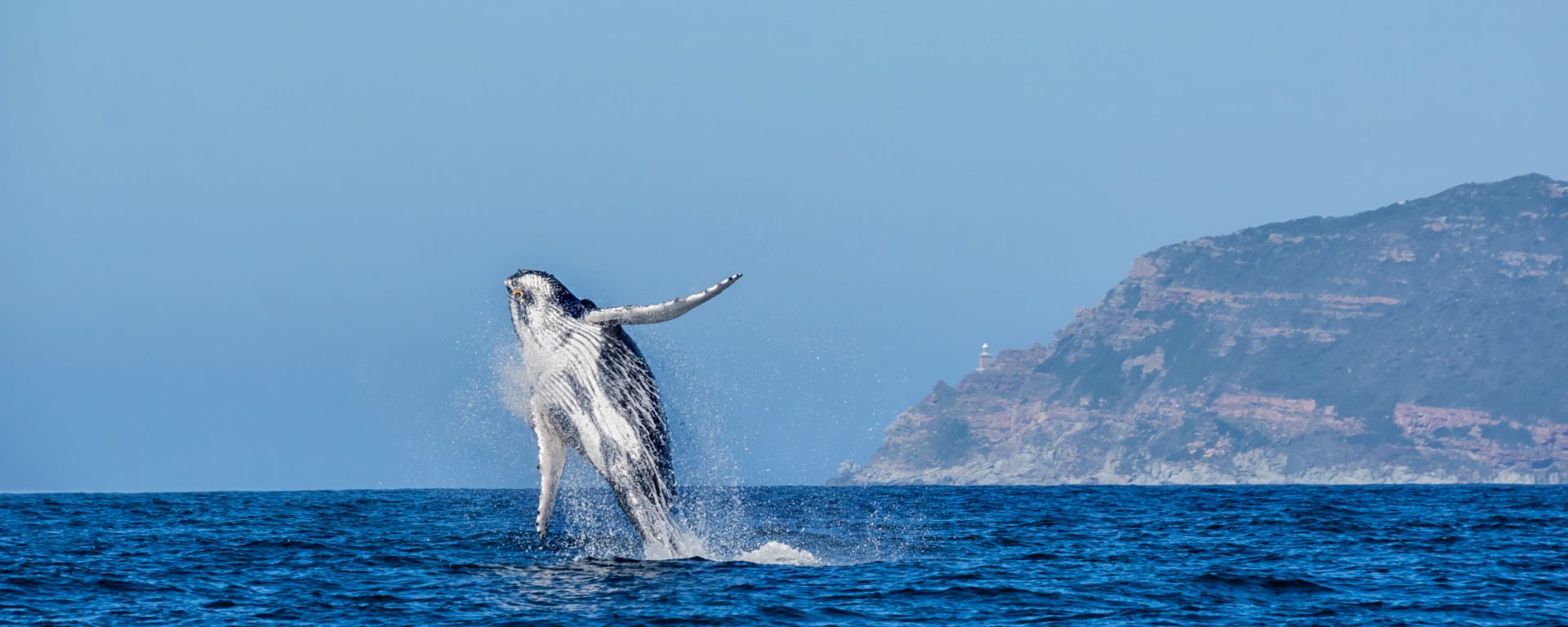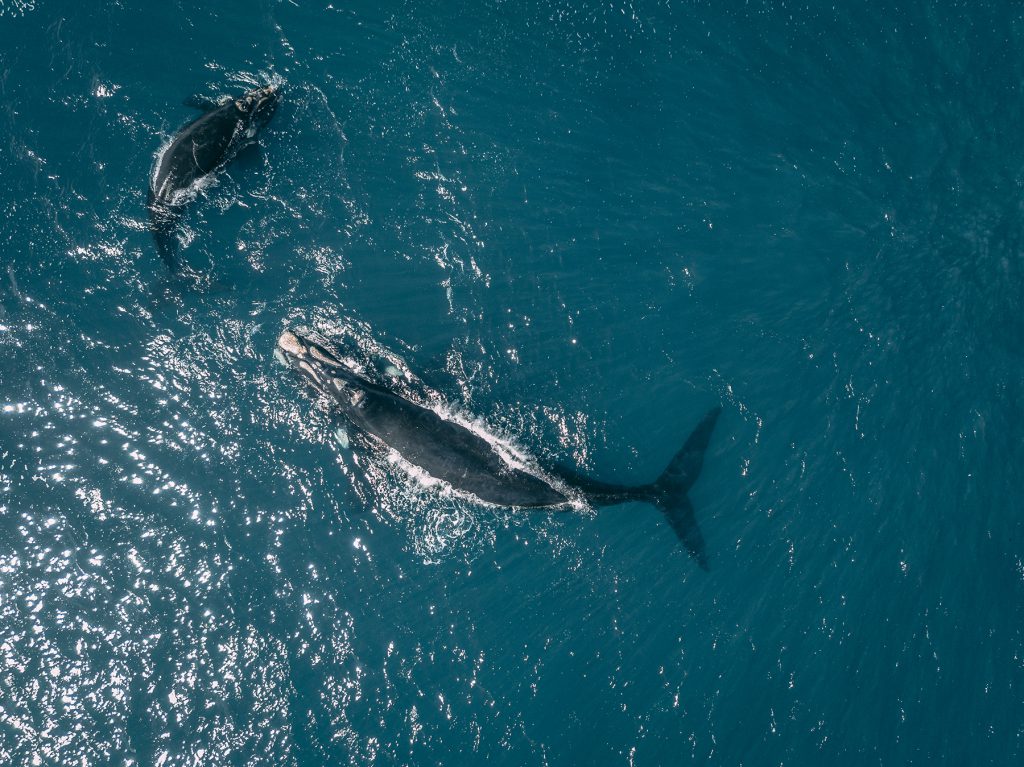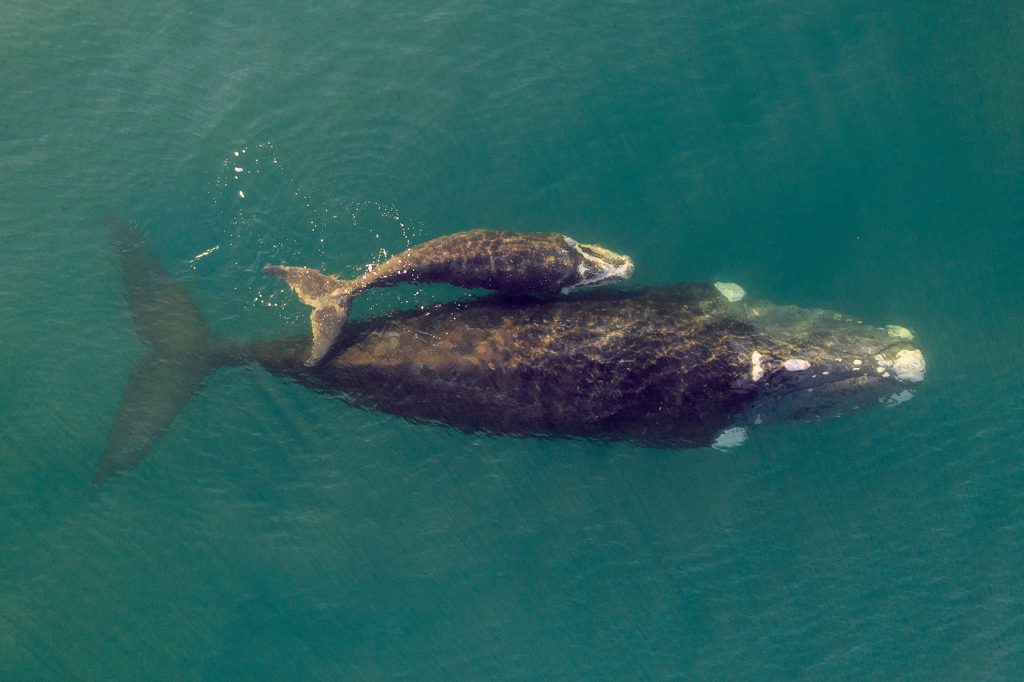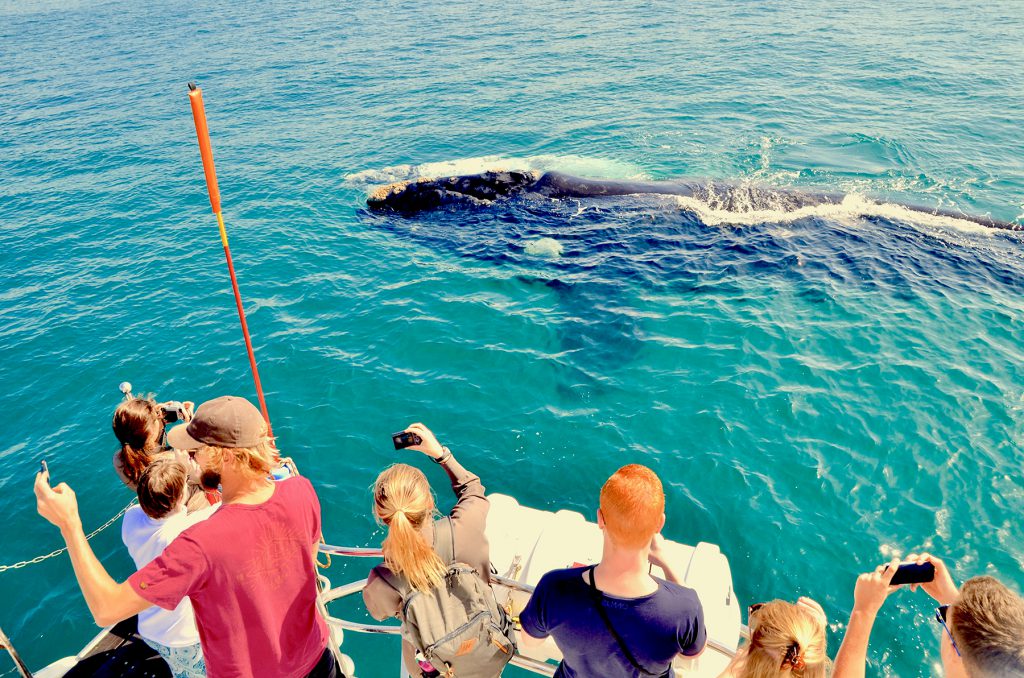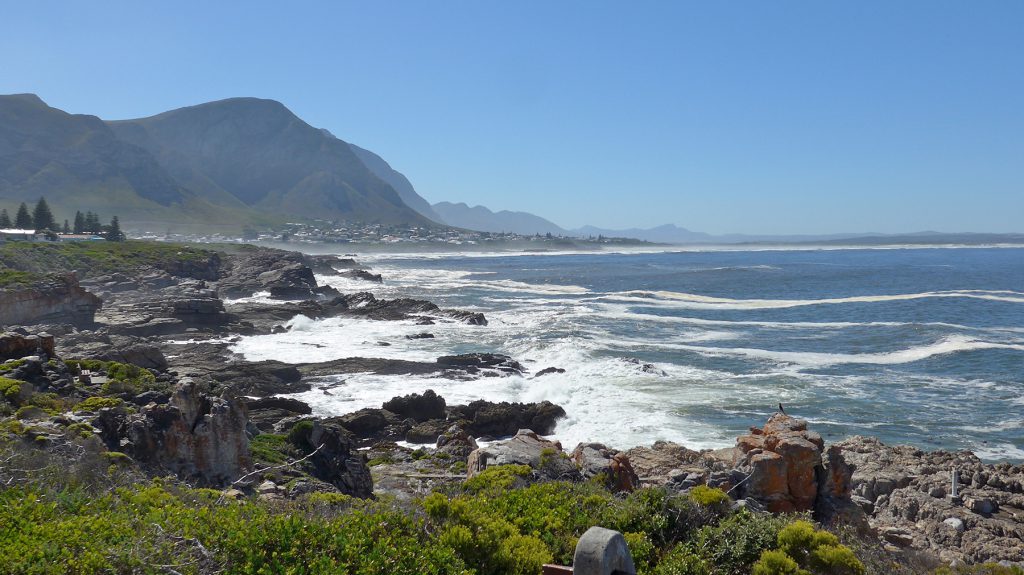While the SA Whale Route is most famous for encounters with southern right whales, humpback whales and several coastal dolphin species; no less than 37 species of whales and dolphins can be found in the waters off South Africa. Lucky for us, the South Coast is perfect for whale watching!
All in all, South Africa has about 1930 km of whale watching coastline, extending from Durban to just south of Cape Town. Because the continental shelf is very close to land along the South Coast, the whales can come in very close to shore, which makes this ideal whale (and dolphin!) spotting territory. Whale watching season in KZN runs from around July to November.
They often select sheltered bays close in-shore, or close to river mouths, to cavort and live their best whale-lives; which puts Uvongo bang on target!
Hot Tips for Whale Watching
- Early morning is the best time of the day for spotting whales, as there is normally less wind.
- However, whale-spotting may be a more spectacular event later in the day, as it has been noted that whales actually become more active later on, when the wind starts to pick up.
- Keep a watchful eye out for the whales spout or blow, this is the first clue that they are around. Whales have to come to the surface to breathe. In order to take a breath, they ensure their blowhole clears the surface, first exhale, then breathe in. The whale’s spout is the mist or spray that can be seen when they exhale. Keep your eyes peeled for a white spray a few meters above the water, along the horizon. P.S. these giant ‘puffs’ are surprisingly loud, so keep your ears peeled too!
- “Footprints” are another tell-tale sign that there are whales present. When a whale makes a shallow dive, it swims just under the surface for a few minutes. As it moves its powerful tail, it creates a disturbance on the surface that looks like an oil slick. This “footprint” enables us to track the whale by following its “footprints”.
- Also look for white patches on the surface, out at sea. These are often caused by waves breaking over the body of a whale
- If you notice any kind of giant splash out of the corner of your eye, keep looking in that direction as it could be whales breaching*
*breaching is when a whale breaks through the surface of the water
Wild whale watching really is a joy! We hope that you’ll have a whale of a time 😉 on your next visit to KwaZulu-Natal!
